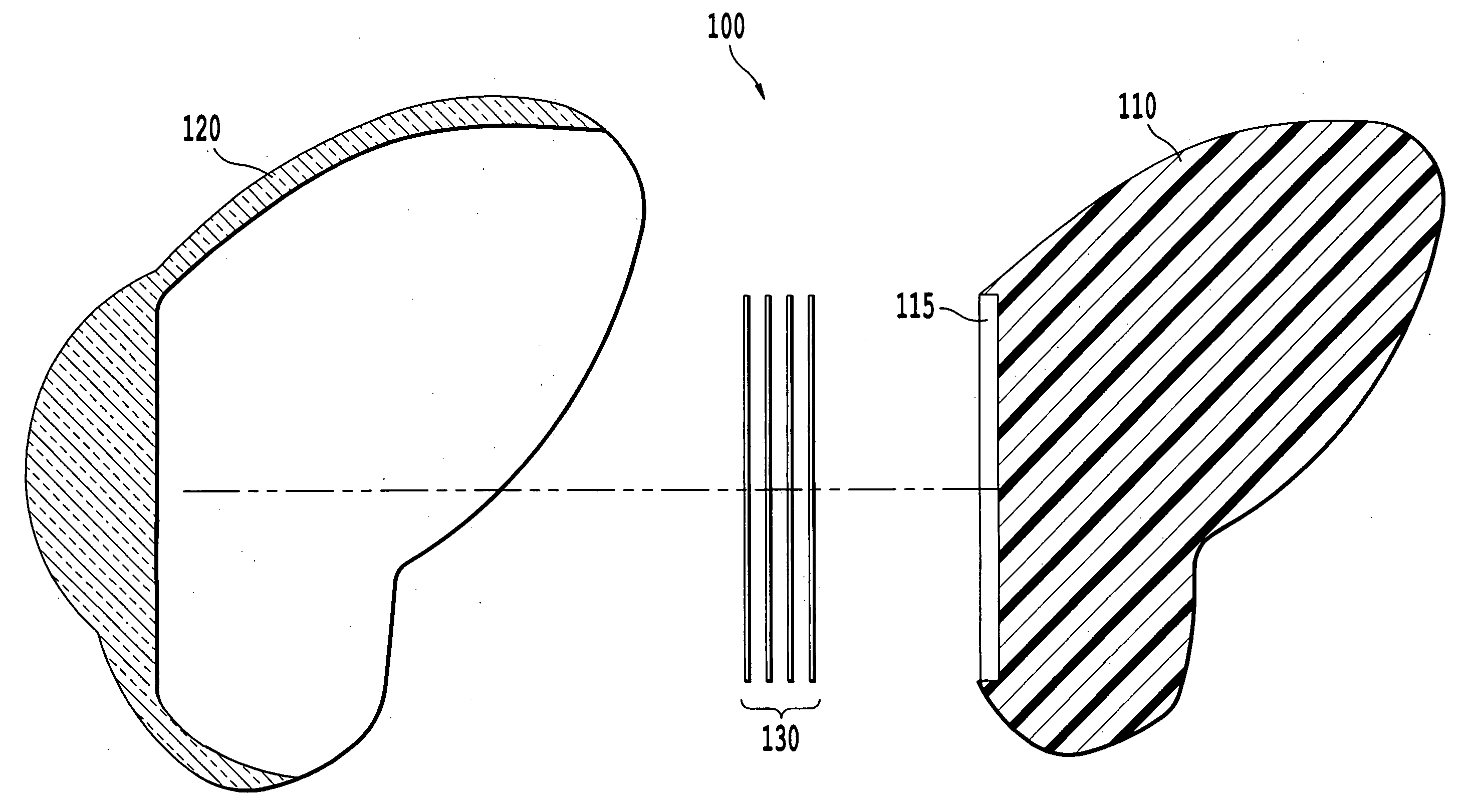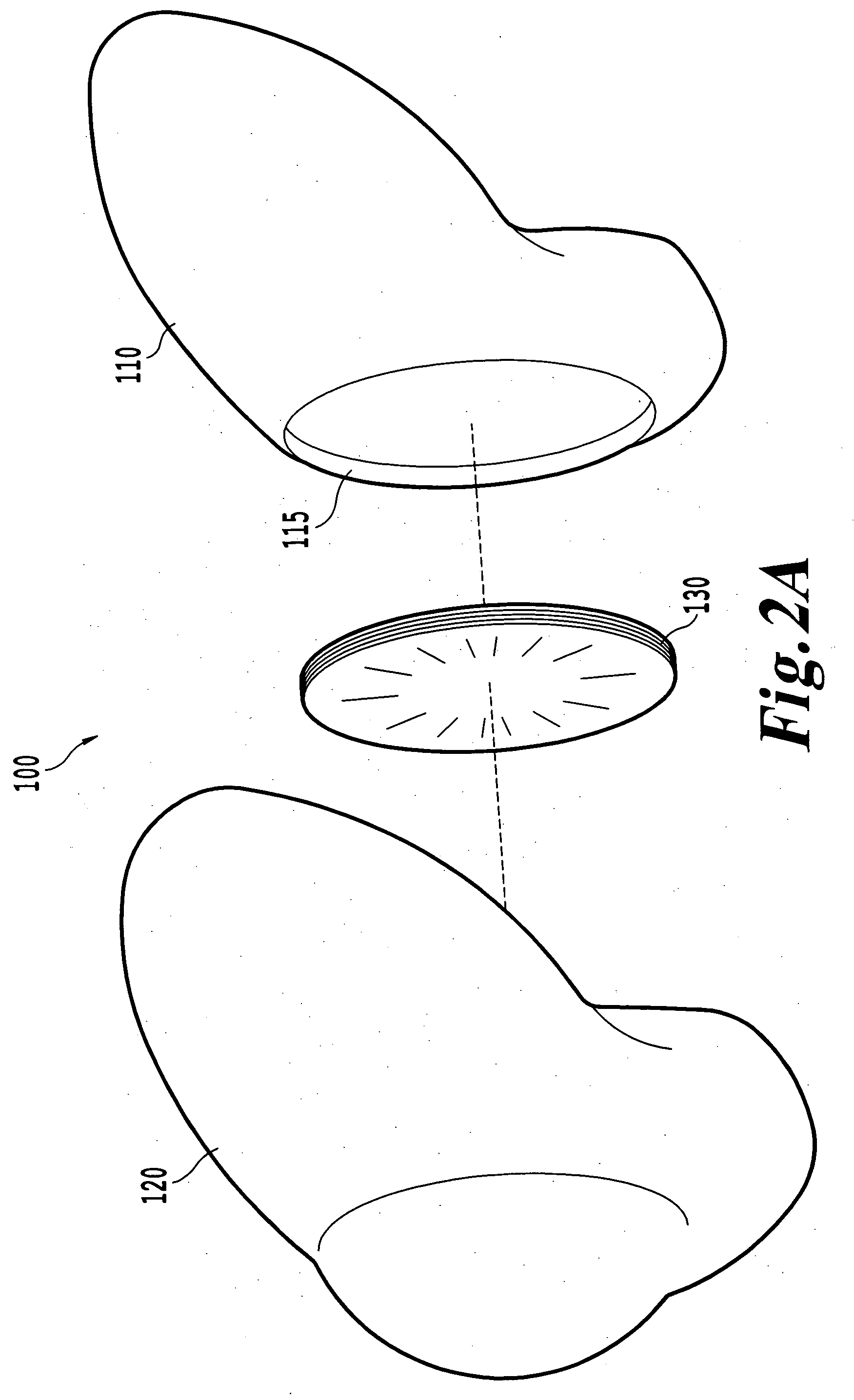Ocular prosthesis and fabrication method of same
a technology of ocular prosthesis and fabrication method, which is applied in the field of ocular prosthesis, can solve the problems of lack of high degree of precision, time-consuming, and outdated technology of the current fabrication method
- Summary
- Abstract
- Description
- Claims
- Application Information
AI Technical Summary
Problems solved by technology
Method used
Image
Examples
first embodiment
[0041]FIG. 5 is a flowchart illustrating a first embodiment for an ocular prosthesis fabrication method according to the invention. As illustrated, an impression of the anophthalmic or enophthalmic socket at 300 or a patient's existing ocular prosthesis at 310 is provided and placed into a three dimensional scanning device at 320.
[0042] The impression taken of the patient's anophthalmic or enophthalmic socket is done in a manner that is well known to an ocularist, as already described. In summary, the process includes the placement of an impression tray (similar to a dental impression tray, but of an appropriate shape for the ocular socket) into the patient's orbit and injecting an alginate, Polyvinylsiloxane, or other dental type impression material into the socket. This material forms in a short period of time into a semi rigid shape that has the contours of the ocular socket and is then removed from the socket. This process of obtaining an impression has previously been described...
second embodiment
[0047] A second embodiment for the ocular prosthesis fabrication method according to the invention, which includes the manipulation and printing of an iris image at 410, is illustrated in FIG. 6. As shown, an impression of the eye socket and at least one photograph of the patient's remaining eye, or a “donor” iris photograph of desirable character in the case of bilaterally blind patients, are first provided at 400. Subsequently, in one hand, the impression or the previous well fitting prosthesis is scanned three dimensionally at 420, the scanned data are manipulated at 430, and the white and clear parts of the prosthesis are machined at 440, and, on the other hand, the photograph of the patient's remaining eye is manipulated and an iris to be disposed on the final ocular prosthesis is then produced at 410. At step 450, the iris produced at 410 is added to the white and clear parts produced at 440; and the sclera is then modified. The parts are then combined at 460 and the final pro...
PUM
| Property | Measurement | Unit |
|---|---|---|
| color | aaaaa | aaaaa |
| diameter | aaaaa | aaaaa |
| transparency | aaaaa | aaaaa |
Abstract
Description
Claims
Application Information
 Login to View More
Login to View More - R&D
- Intellectual Property
- Life Sciences
- Materials
- Tech Scout
- Unparalleled Data Quality
- Higher Quality Content
- 60% Fewer Hallucinations
Browse by: Latest US Patents, China's latest patents, Technical Efficacy Thesaurus, Application Domain, Technology Topic, Popular Technical Reports.
© 2025 PatSnap. All rights reserved.Legal|Privacy policy|Modern Slavery Act Transparency Statement|Sitemap|About US| Contact US: help@patsnap.com



